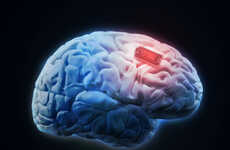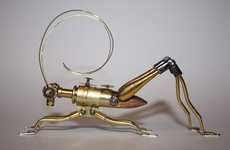Transcranial Magnetic Stimulation Changes You from a Righty to a Lefty
Meghan Young — September 29, 2010 — Unique
For some reason I have always wanted to be a lefty, and now that might be possible through Transcranial Magnetic Stimulation.
Developed by researchers over at the University of California Berkeley, Transcranial Magnetic Stimulation essentially applies a magnetic force to the posterior parietal cortex region, which results in people favoring their non-dominant hand. Although suddenly writing with my left hand isn't going to happen right away, the ambidextrous possibilities seem endless.
Developed by researchers over at the University of California Berkeley, Transcranial Magnetic Stimulation essentially applies a magnetic force to the posterior parietal cortex region, which results in people favoring their non-dominant hand. Although suddenly writing with my left hand isn't going to happen right away, the ambidextrous possibilities seem endless.
Trend Themes
1. Ambidextrous Revolution - Transcranial Magnetic Stimulation technology can lead to new products and services that foster ambidexterity and change interactions with daily objects.
2. Neuroplasticity Enhancement - Transcranial Magnetic Stimulation can improve neuroplasticity, leading to more cognitive and physical abilities and a potential paradigm shift in brain-based interventions.
3. Personalized Motor Skills Training - Transcranial Magnetic Stimulation can be combined with coaching and online platforms to develop customized motor skills training programs, resulting in more efficient and engaging learning experiences.
Industry Implications
1. Healthcare - Transcranial Magnetic Stimulation can be used to treat neurological and motor disorders, manage pain and even addiction, presenting opportunities for novel therapeutics and personalized medicine.
2. Education and Training - Transcranial Magnetic Stimulation can be applied to enhance learning outcomes, ranging from sports and music to language and STEM, creating new markets for edtech and skill-building platforms.
3. Consumer Technology - Transcranial Magnetic Stimulation can be integrated into wearables, smart homes, and gaming devices, creating immersive experiences and expanding the functionality of everyday objects.
4.7
Score
Popularity
Activity
Freshness






















